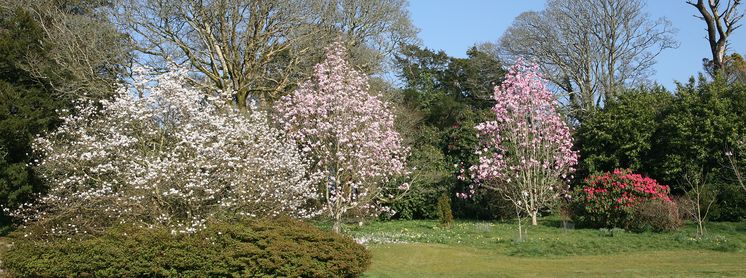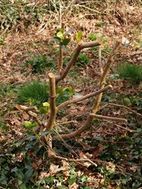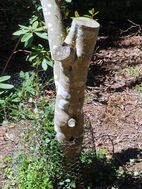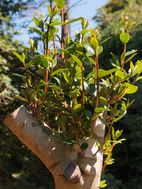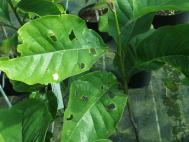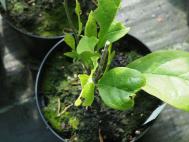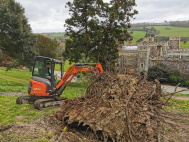Pruning Camellias
Camellias which are very old or which are starting to get in the way on paths can readily be pruned back as hard as you like with no ill effect. You can even cut off all the greenery and turn them back into a ‘hat stand’ without any worries about them reshooting vigorously from the main woody stems. After pruning a mulch of leaf mould or well rotted manure will encourage speedy regrowth.
We have a more details on how to care for your camellias throughout the year if you are interested in reading more.
Camellias - Sooty Mould
Caused by the sucrose secreted by thrips who survived a mild winter may cause a black sooty mould to appear on your camellia leaves, whilst unsightly this mould will not harm the plant and the leaves will fall later in the year. You can wipe the mould off with a damp cloth if you wish and your plant is not too large.
Control of sooty mould on Camellia’s. Sooty mould is a fungal growth which grows on honey dew secreted by insects, control these pests and then wipe off the mould with a damp cloth.
Pruning Forsythia
Mulching
Mulching to retain moisture and inhibit weed growth around newly planted and particularly previous plants. Save yourself time and work in the summer by mulching now around the base of your key plants with either bark mulch or some other mulch of leaf mould, well rotted manure or perhaps the first grass cuttings. This will suppress weed growth around the base of the plant which will compete for summer moisture and will also fertilise the plant as well. Take care not to cover the base of the stem especially if you are mulching around a grafted plant.
Spot spray around base of trees and shrubs with a good contact herbicide i.e. Roundup.
We have a more detailed care article on shrubs for those of you who wish to know more.
Slug Damage
Slug damage to the newly emerging buds and leaves on magnolias can be avoided by slug baiting around the plants. Ground based small slugs find magnolia leaf buds delicious and on wet and moist nights they can quietly strip your plant without you realising what the problem is. The plant either dies or suffers severe die back which is often only noticed later in the year when the blame is often directed at the nurseyman or garden centre. Take preventative action and repeat the application of slug pellets after heavy rain.
Magnolias with slug damage.
Hand weed young seedlings and larger potted specimens in glass house, cold frames, standing out beds. By removal of newly germinated weeds at a young age prevents seeding and saves a lot more work later in the year. Prick out any young seedlings that have germinated and have developed their true leaves. Watch out for damping off of seedlings, ventilate glass house well and avoid over watering. Ventilate glass house and cold frames on sunny days to reduce humidity and help prevent disease.
Slug bait any young seedlings in the glass house, and plants around the garden that have soft young growth especially Magnolia’s.
Cutting back Ivy
Checking and Repairing Wind Damaged Plants
If you have a woodland garden some of winter wind damage maybe very obvious and you may need heavy equipment to deal with the debris.
Magnolias in flower in the Burncoose Gardens in April.
